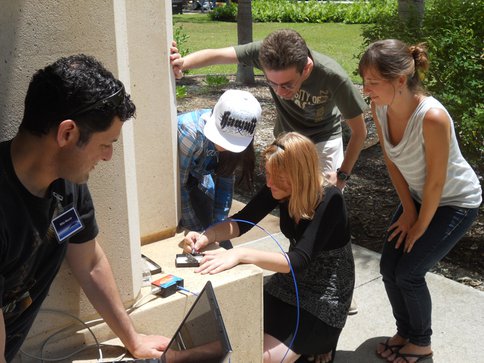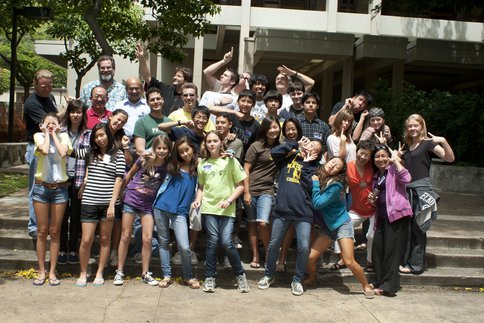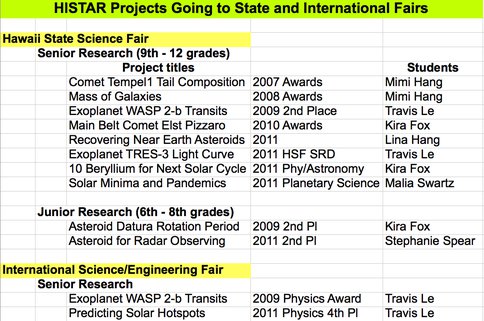2011 Annual Science Report
 University of Hawaii, Manoa
Reporting | SEP 2010 – AUG 2011
University of Hawaii, Manoa
Reporting | SEP 2010 – AUG 2011
EPO Activity: 2011 HI STAR
Project Progress
Conducted since 2007, HI STAR expanded this summer to include 4 Continental US students from California. These students and their accompanying teachers had to pay for their own airfare to participate. Thus, we had 21 students compared to 16-18 in previous years. Recruiting students truly interested in conducting projects is critical to the success of HI STAR. The popularity of HI STAR drew more applicants. So far, a few new participants are not fulfilling their obligation to continue working on their projects. They are science students highly recommended by teachers, but classwork is not the same as research. For 2012, we will recruit students who start working on astronomy prior to the summer. This would serve as concrete evidence of genuine interest for participation. Our student selection has been key to the success of HI STAR.
For the 2011 Hawaii Science Fair, 2 HI STAR students garnered physics and earth science category awards in Senior Research division and 2 students received astronomy awards in Junior Research and Display divisions. 2 others had senior research division projects. At the 2011 Intel International Science and Engineering Fair, another student got 4th place in physics category out of 81 projects. (Figure 1) Our astronomer mentors deserve as much credit for these student achievements since they participate during the HI STAR summer program as group project mentors and then continue to work with the students during the subsequent school year.
Since HI STAR assessment has been outcome-based on the number of students completing research projects and whether they select STEM majors for college, tables have been made of this. A longitudinal study of their college majors still needs to be completed for 2010 and 2011 graduates. Since students are 12-16 years old, many participants still have not graduated from high school. A formal qualitative evaluation has been conducted for 2011 HI STAR with interviews of all 7 returning students and 14 new participants. Allowing students to return for 2-3 summers was an incentive for them to complete projects for Science Fair. Sheri Fitzgerald, adjunct Charminade University instructor for science student teachers who will get her PhD in science education in 2012, conducted this evaluation and presented the positive results at our November NAI Central EPO telecom. The full report is available through Daniella Scalice, NAI Central Office EPO manager.
{{1720}}
Ashley and Stephanie use a spectrometer to measure spectral lines of a meteorite with the help of mentors.
After working on group projects mentored by astronomers, all HI STAR students do power point presentations of their project results to an audience of parents, friends and UH IfA astronomers and staff. Shown here are Conor, 8th grader from Maui, Malia, 9th grader from Oahu, and Regina and Alexsys, 9th graders from Kauai, who used Mira photometry software to produce light transits of extrasolar planet images taken by the Faulkes Telescope North located on Haleakala, Maui. The students are fortunate to have access to this 2 meter telescope owned by Las Cumbres Observatory Global Telescope Network.
7th grader Zoey Fox intently works online with private observatory owner Donn Starkey learning how to use the software that controls his telescope, located in Auburn Indiana.
2011 HISTAR students, teachers, graduate student counselors, astronomer mentors, and staff relieve their stress from working so hard by being silly in this group photo.
Summary of HISTAR projects going to the Hawaii State and International Fairs.
{{ 8 }}
7th grader Sophie measures the mass of a meteorite.





